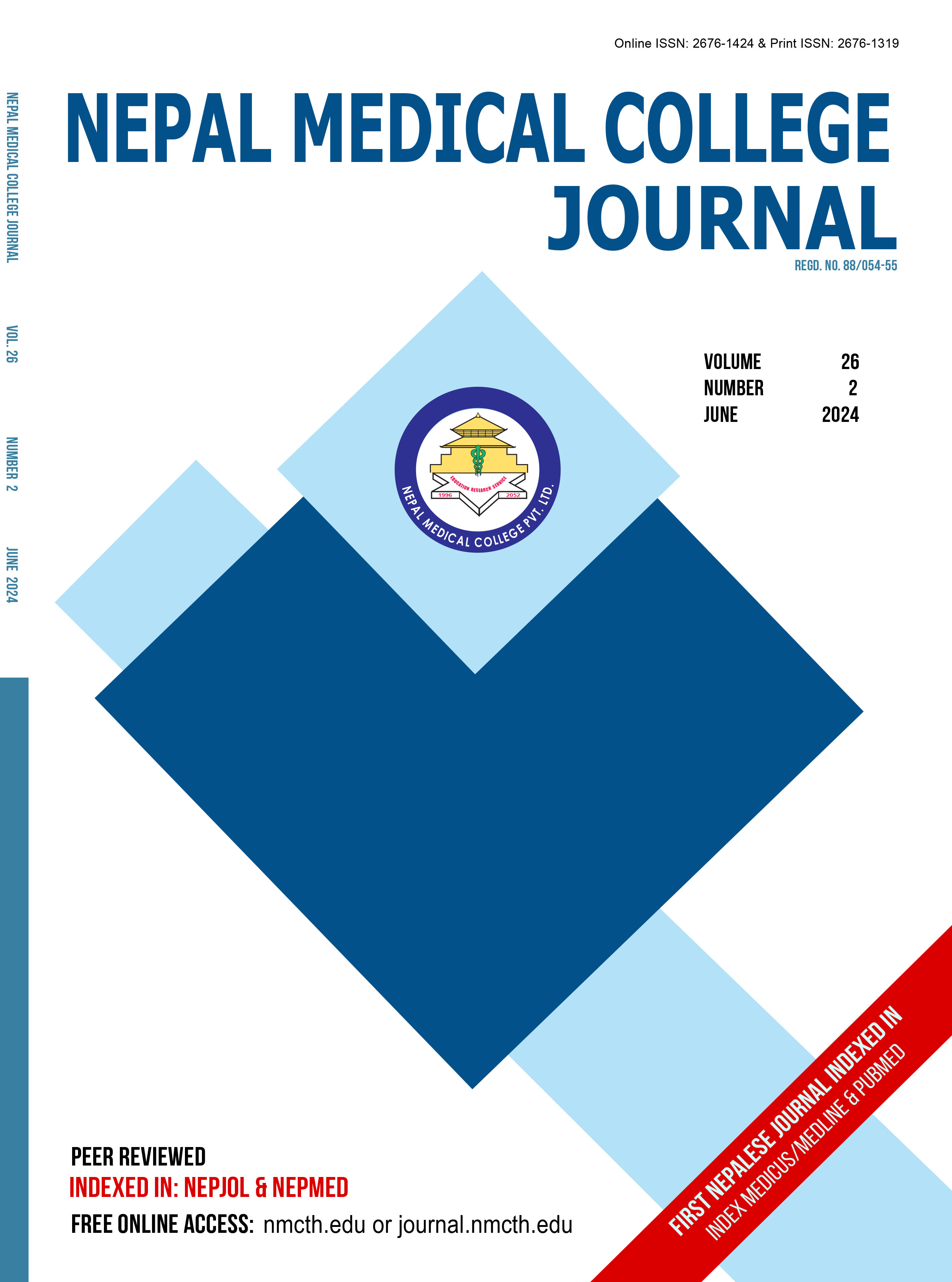The Association between S.T.O.N.E. Nephrolithometry Score and Hemoglobin Drop in Patients Undergoing Percutaneous Nephrolithotomy
DOI:
https://doi.org/10.3126/nmcj.v26i2.67190Keywords:
STONE nephrolithometry score, PCNL, hemoglobin, complicationAbstract
Nephrolithiasis is a very common condition with significant burden to patients. Percutaneous nephrolithotomy (PCNL) is safe procedure considered as gold standard for large renal stones. The most common complication of PCNL is bleeding which can require blood transfusion to angioembolization and may even need nephrectomy. The purpose of this study is to assess if STONE Nephrolithometry Score can predict hemoglobin drop in PCNL procedure. A total of 104 patients who underwent PCNL during one year period from October of 2022 to September of 2023 were taken using consecutive sampling method. All patients with renal stones underwent routine blood tests including complete blood counts, renal function and electrolytes. CT scans were then done and STONE nephrolithometry Score was evaluated. PCNL was performed and hemoglobin investigation was sent at 24 hours postoperatively. The two data were compared with the STONE nephrolithometry Score and other factors. More than three-fourths (78.8%) of the patients had comorbidities with hypertension being the commonest (76.9%). There was a significant association of drop of hemoglobin more than 1 g/dl with age <30 years (p <0.034), higher preoperative hemoglobin (p <0.046), larger stone size (p <0.001), shorter tract length (p=0.017) and STONE Score greater than 10 (p<0.001). On correlation study only STONE score (p = 0.015) and larger stone size (p = 0.002) were associated with hemoglobin drops of more than 1 g/dl. STONE Nephrolithometry score is a good predictor of bleeding complications during PCNL and higher score is associated with more drop in hemoglobin levels.
Downloads
Downloads
Published
How to Cite
Issue
Section
License
Copyright (c) 2024 Nepal Medical College Journal

This work is licensed under a Creative Commons Attribution 4.0 International License.
This license enables reusers to distribute, remix, adapt, and build upon the material in any medium or format, so long as attribution is given to the creator. The license allows for commercial use.




